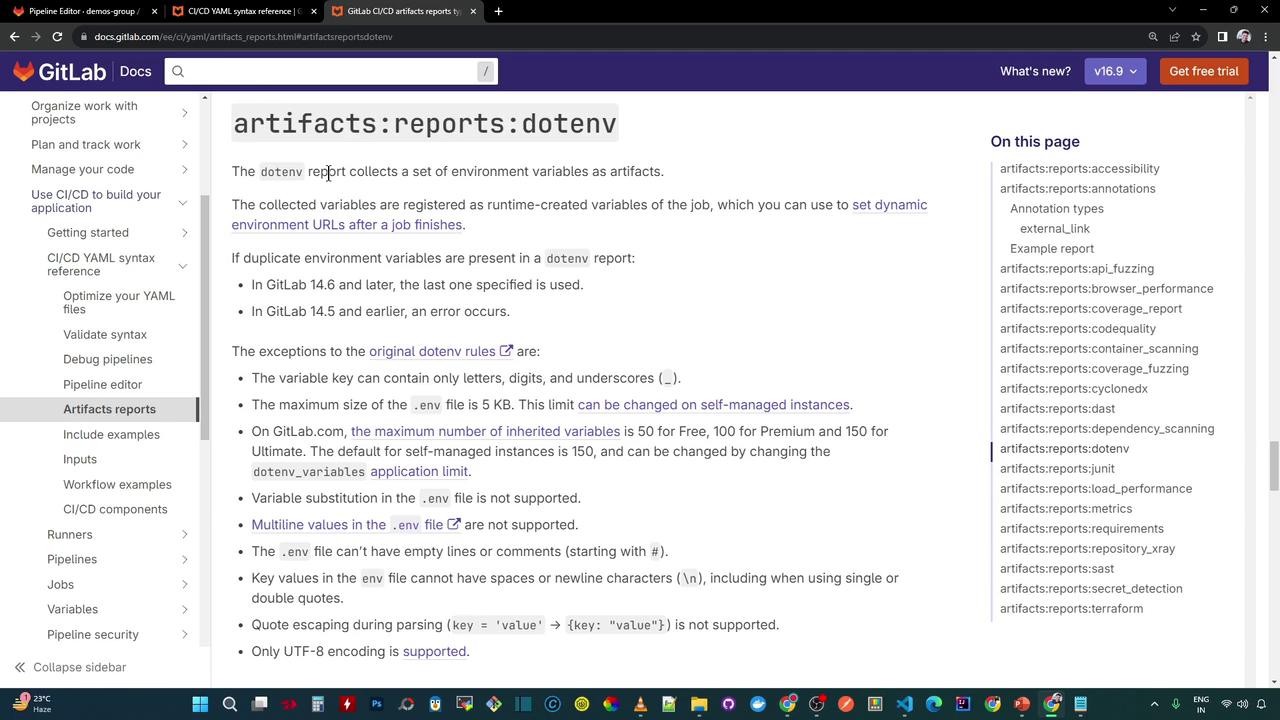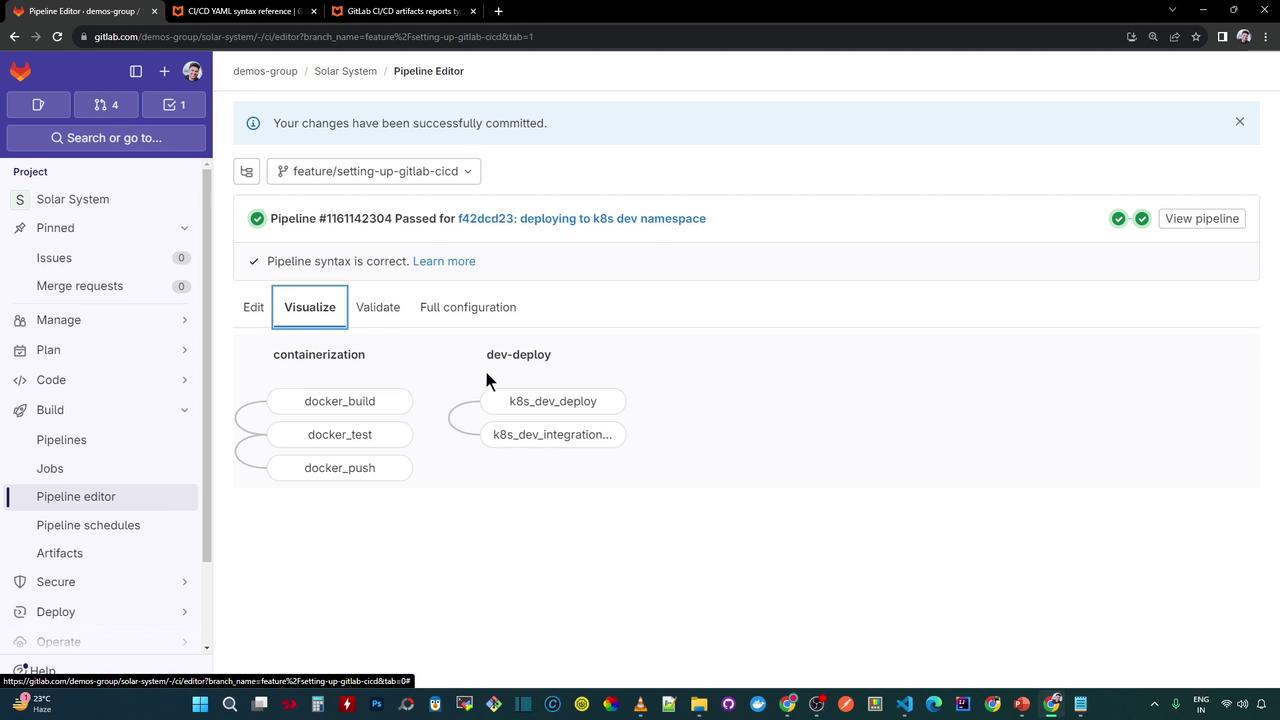GitLab CI/CD: Architecting, Deploying, and Optimizing Pipelines
Continuous Deployment with GitLab
Job Fetch Ingress URL amp Integration testing
In this guide, we’ll extend our GitLab CI pipeline by adding an integration testing job. After deploying to Kubernetes, we’ll extract the Ingress host URL, save it as a dotenv report, and consume it in downstream tests to verify our service endpoints.
1. Define the Integration Testing Job
Begin by declaring a k8s_dev_integration_testing job in the dev-deploy stage. This job installs curl and jq, then probes the /live and /ready endpoints to confirm service health:
k8s_dev_integration_testing:
stage: dev-deploy
image: alpine:3.7
before_script:
- apk --no-cache add curl jq
script:
- curl -s -k https://$INGRESS_URL/live | jq -r .status | grep -i live
- curl -s -k https://$INGRESS_URL/ready | jq -r .status | grep -i ready
2. Capture the Ingress Host URL in CI
After your application manifests are applied, list the Ingress resource to confirm its host:
kubectl -n development get ing
NAME CLASS HOSTS ADDRESS PORTS AGE
solar-system <none> solar-system-development.139.84.208.48.nip.io 139.84.208.48 80,443 39m
Extract the hostname via JSONPath:
kubectl -n development get ing -o jsonpath="{.items[0].spec.tls[0].hosts[0]}"
Automate this in your deploy job and append the result to a dotenv file:
k8s_dev_deploy:
stage: dev-deploy
image: alpine:3.7
script:
- export KUBECONFIG=$DEV_KUBE_CONFIG
- kubectl version -o yaml
- kubectl config get-contexts
- kubectl get nodes
- export INGRESS_IP=$(kubectl -n ingress-nginx get svc ingress-nginx-controller \
-o jsonpath="{.status.loadBalancer.ingress[0].ip}")
- echo "🔍 Ingress IP: $INGRESS_IP"
- kubectl -n $NAMESPACE create secret generic mongo-db-creds \
--from-literal=MONGO_URI=$MONGO_URI \
--from-literal=MONGO_USERNAME=$MONGO_USERNAME \
--from-literal=MONGO_PASSWORD=$MONGO_PASSWORD \
--save-config --dry-run=client -o yaml | kubectl apply -f -
- for manifest in kubernetes/manifest/*.yaml; do
envsubst < "$manifest" | kubectl apply -f -
done
- echo "INGRESS_URL=$(kubectl -n $NAMESPACE get ing \
-o jsonpath='{.items[0].spec.tls[0].hosts[0]}')" >> app_ingress_url.env
artifacts:
reports:
dotenv: app_ingress_url.env
Note
By registering app_ingress_url.env as a dotenv report, GitLab exposes INGRESS_URL as a CI variable for subsequent jobs.

3. Consume the Ingress URL in Integration Tests
Now update the integration testing job to depend on the deploy job. This ensures that INGRESS_URL is available:
k8s_dev_integration_testing:
stage: dev-deploy
needs:
- k8s_dev_deploy
image: alpine:3.7
before_script:
- apk --no-cache add curl jq
script:
- echo "Using Ingress URL: $INGRESS_URL"
- curl -s -k https://$INGRESS_URL/live | jq -r .status | grep -i live
- curl -s -k https://$INGRESS_URL/ready | jq -r .status | grep -i ready
4. Visualize the Pipeline
After committing your .gitlab-ci.yml, your pipeline in the dev-deploy stage will include two sequential jobs:

Upon completion, both jobs report success:

References
Watch Video
Watch video content